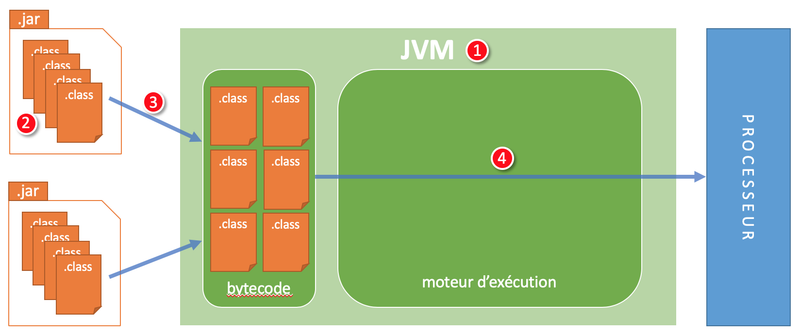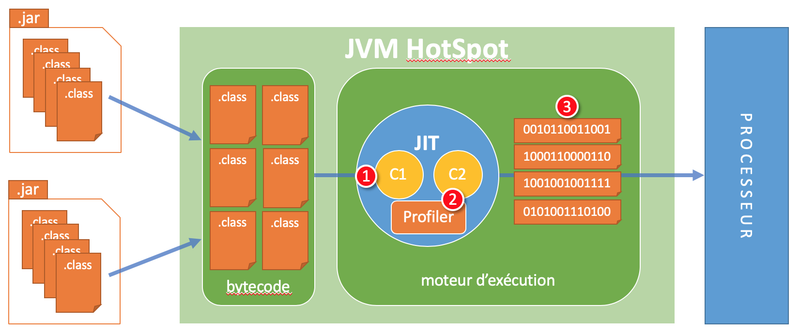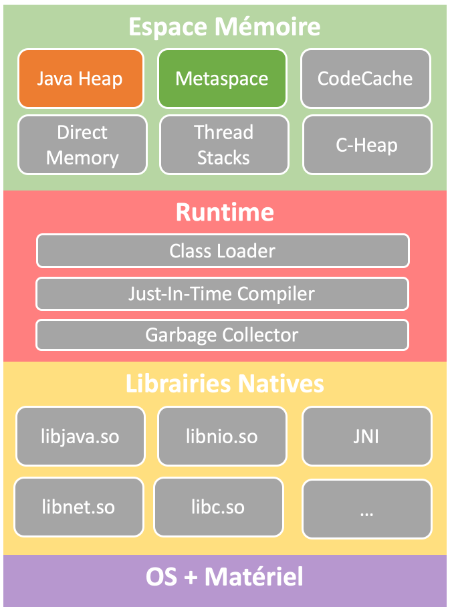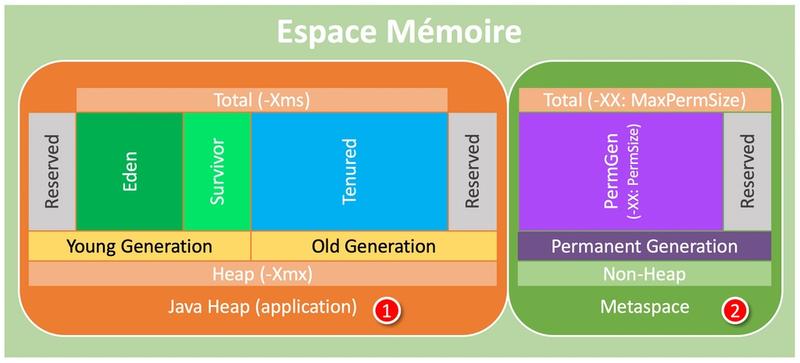
Java and microservices
This article is the first in a series discussing the concepts of the new GraalVM virtual machine.
We will discuss here basic notions on microservices, on Java and its JVM HotSpot. This will give us a first idea on the suitability of Java to the world of containers and especially microservices.
What is a microservice?
We can, for the oldest among us, consider microservices as an extension of the concept of SOA (Service Oriented Architecture) with the advent of the cloud.
A microservice can be characterized as:
- A service designed to manage a single feature (e.g. user management)
- Elastic, ie easily scalable. This involves rapid deployment, a lightweight service, all of this in a container, or even in the cloud.
- Automated, from the build process to deployment. Generally, it is maintained by a dedicated and small team, with automated tests to quickly deploy a new version.
Microservice vs FaaS
FaaS, for Functions-as-a-Service, goes a little further in this concept, adding the notions of serverless (the infrastructure necessary for the service is the responsibility of the supplier) and stateless (dear to functional programming, x -> f (x), always!)
What is Java?
Everyone knows Java! A language interpreted by a JVM and portable on different systems. However, let’s review a few notions about its internal functioning to fully understand its scope.
How the JVM works
The interpretation

- The JVM is an executable which reads bytecode and then interprets it.
- The bytecode is in .jar packages as .class files
- The JVM searches the .class file in the .jar packages, checks the .class file then loads it
- Once the bytecode is loaded, the JVM can execute it (semi-interpret it)
Executing bytecode therefore has a cost:
- The bytecode is sought, verified then interpreted by the JVM which itself runs on the processor.
The Just-In-Time (JIT) compiler

- When executing a Java method, JIT’s
C1compiler (just-in-time, on the fly) will compile it to native code and theProfilerwill start to collect information on its use.
C1 is a light and fast compiler but it does not produce optimized native code.
- When the profiler detects a widely used method, Hot, the
C2compiler will use information from the Profiler to produce native code, aggressive, optimized and very well suited to the context of use.
C2 is a heavy and slow compiler but it produces very well optimized and very fast native code.
There is actually a cycle between compilation C1 and C2. The C2 compiler will often recompile chunks of bytecode with new information from the profiler to produce an ever more optimal binary.
- After a while, when many pieces of bytecode have been compiled by the C2 compiler, the Java application will run very quickly.
- So it takes a heating time, warm-up, to a Java application to be fully responsive.
- This is a real problem for a microservice which must be able to be deployed and operational very quickly.
L’empreinte mémoire
Architecture générale de la JVM

When we look at the general architecture of a JVM, we can only see that there are a lot of components. We also see that its memory space is compartmentalized.
Let’s focus on 2 of them.
Detail of 2 memory spaces

The JVM allocates memory for the application but also for its own metadata and its operation:
The Java Heap stores instances of Java objects. It is divided into 2 parts: the Young Generation which contains the newly created objects and the Tenured Generation which contains items that have withstood the garbage collector (Garbage Collector).
The Metaspace (formerly PermGen) contains class metadata (bytecode of methods, symbols, constant pools, annotations …).
- For a 10MB application, the JVM often occupies a size of 100MB.
- Again, this is a problem for a microservice which must have the smallest possible memory footprint.
How Java Frameworks work
It is now customary to embed several frameworks in a Java application in order to simplify certain technical aspects or to organize its application layers.
Let us take the case of 2 frameworks, undoubtedly, the most used in the Java world: Spring and Hibernate.
Here is what a Java application that uses these frameworks, will perform when it starts:
- Reading and parsing of configuration files,
- Complete class scan to retrieve metadata (annotations, accessors, …),
- Creation of a metamodel,
- Preparation of the reflection,
- Creation of proxies (lots of proxies!), …
However, these are frameworks widely used by developers and, in reality, very well suited to monolithic applications.
- Java frameworks amplify the problems of startup time and memory consumption of the JVM.
How do we do now?
To summarize
We have seen the problems of Java:
- High memory consumption
- Need for a warm-up time at start-up
- Native code optimization on the fly
A priori, all that is not necessary for a microservice.
So what do we do now? We forget about Java and we all get into C++ ??
None of that of course. The answer in the following article presenting GraalVM. And you will see that it moves!
Cheers…




